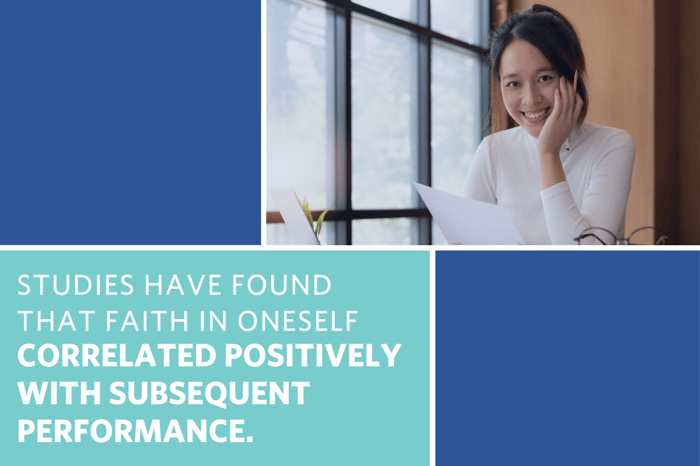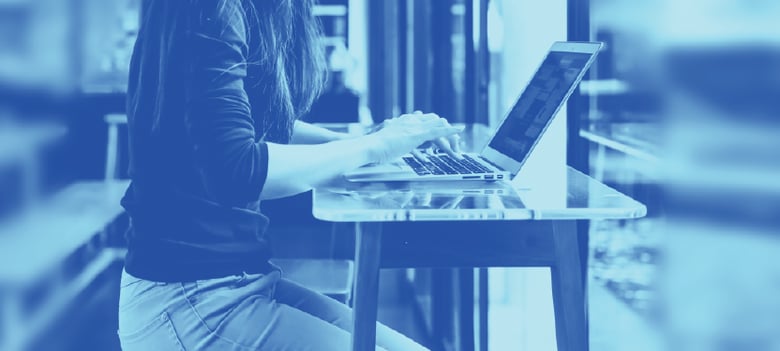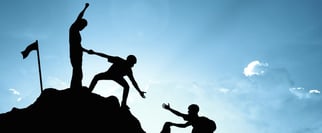At InsideOut Development, we believe that everyone has the capacity to learn and perform at a higher level. A manager’s job is to draw that greatness out of employees — to maximize performance and draw out potential.
Understanding the key elements of performance allows business leaders to target their coaching and maximize effectiveness, which is why we’ve synthesized these elements into what we call the Performance Wheel™.
Faith and the Performance Wheel™
One component of the Performance Wheel™ and a key element of performance is Faith. Faith is what you believe about yourself, others, and your organization as a whole. It’s greatly influenced by your answers to the following questions: 
- What do you believe about your ability to complete the task?
- Do you believe that your expertise will make a difference in the results?
- Do you believe you can communicate what you know in a way that will get people’s attention?
- Do you believe in yourself and your expertise enough to want to face the roadblocks that will show up?
When you work with someone that doesn’t believe in you, they are doubting your ability to perform, making it much harder to stay engaged. And when they doubt your ability, it activates your internal dialogue and you start to doubt your ability. You become more engaged in your internal dialogue about your work and less engaged in the work itself.
On the other hand, it’s likely that the best coaches and mentors you’ve had are those that believed in you, even when you didn’t believe in yourself. Those coaches helped you cultivate Faith in yourself to get the job done and get it done well.
The Psychology Behind Faith
In psychology circles, faith in self is known as self-efficacy. Self-efficacy is an optimistic belief in your own competence that increases personal productivity. People with high self-efficacy:
- View difficult tasks as something to be mastered rather than avoided
- Set higher goals
- Are more committed to their goals
- Find and use better strategies to attain the goals
- Respond more positively to negative feedback
While typically viewed as an innate characteristic, self-efficacy can be nurtured through your perceptions of external experiences. The books highlighted below shed light on how to tap into faith in yourself even in the midst of external interference.
The Inner Game of Tennis
Tim Gallwey, considered by many to be the founder of sport psychology, discusses the idea of faith extensively, describing the two “selves” that reside in each of us.
Self 1 is the thinker and director. It takes information and makes your muscles comply. Self 2 is our natural self. It’s responsible for everyday actions like breathing and walking and reading — the things you don’t actively think about.
He argues that Self 2 knows how to do a lot more than Self 1 gives credit for, noting that “getting it together mentally…involves learning several internal skills: 1) learning how to get the clearest possible picture of your desired outcomes; 2) learning how to trust Self 2 to perform at its best and learn from both successes and failures; and 3) learning how to see ‘nonjudgmentally.’”
Gallwey illustrates his point by describing tennis players volleying intensely. “Moving more quickly than they thought they could, they have no time to plan; the perfect shot just comes. And feeling that they didn’t execute the shot deliberately, they often call it luck; but if it happens repeatedly, one begins to trust oneself and feel a deep sense of confidence.”
Creativity: Flow and the Psychology of Discovery and Invention
After a lifetime of studying human performance, Mihaly Csikszentmihalyi suggests that we all perform better when there is a balance between our perception of the challenge we are facing and our perception of the skill we have to meet the challenge.
We need to have enough of a challenge to keep us excited, but not so much that it overwhelms or discourages us. This is when we are most likely to get into a state of “flow” — a state where we’re focused, fully engaged, and intrinsically motivated.
In this state, we process things faster, learn faster, and are often not even aware of time or space. It’s in this state that whatever we’re doing seems almost effortless.
Your belief in your ability to perform greatly affects your consequent performance. Each day, you’re faced with insecurities in your ability to complete a task, but how you manage those insecurities directly impacts your results. In fact, studies have found that faith in oneself “correlated positively with subsequent performance.”
Using the GROW Coaching Model® to Maximize Faith and Find Your Flow
Understanding Faith and the other components of the Performance Wheel™ allows coaches and individual contributors to identify how performance can be improved and use the GROW Coaching Model to make it happen.
The GROW Coaching Model is a problem-solving framework that enables people to make decisions, commit to action, and produce results. It breaks complex decisions into simple steps.
When facing a big problem, people often feel overwhelmed because they think of the problem as a whole. GROW enables you to organize your thoughts and look at one piece at a time. In other words, the model helps you simplify the challenge to bring your perception of the problem into balance with your perception of your ability to solve it.
Goal
It begins with a Goal. Even if you don’t think you can solve your problem, with a little guidance, you can usually articulate what you want to accomplish.
You aren’t being asked to solve the problem, just articulate it. That is within your abilities — you’re confident you can do that. You’re back in the “flow state.”
Reality
Next, consider your Reality. What have you been experiencing as you try to solve this problem or accomplish this task? Again, you aren’t expected to solve the problem — you’re just examining your current state.
Most people are very comfortable here. You can talk about all the things standing in our way. You’re still in the “flow state.”
Options
Then, move to Options. By asking yourself questions like: “If anything were possible, what might I do?” and “How might I overcome the obstacles I mentioned earlier?” you make brainstorming possible options simple and accessible.
By keeping options hypothetical, you can brainstorm the best solution without being overwhelmed by the obstacles of the problem or practicalities to moving forward. You’re able to stay in the “flow state.”
Way Forward
Lastly, narrow your Options down to one Way Forward. Define your next steps and make a solid plan.
By this point, you’ve eliminated most of the obstacles to decision-making. The entire problem seems more manageable. You’ve increased your Faith in your ability to solve the problem enough that you’re able to move forward while remaining in the “flow state.”
Achieve High Performance With Organizational Faith
An organization with Faith has a clear, compelling sense of mission and purpose that is effectively communicated to and passionately believed in by people on every level. People have a strong "We can!" belief and a firm conviction in the organization's resilience and ability to effectively learn and adapt in a changing environment.
An organization without Faith is filled with fear, doubt, or lack of clarity concerning its value proposition, as well as the value of its purpose and viability in changing circumstances.
Still, Faith is only one element of performance. Performance is also impacted by:
Learn more about these elements of performance in the links above. Or download our free guide to learn more about GROW, the ultimate map for decision-making.





